Aggiornamenti Subsurface Flow Module
Condizione boundary mass source
La nuova condizione al contorno Boundary Mass Source nelle interfacce Phase Transport semplifica l'impostazione del trasferimento di massa dovuto a reazioni o altri processi ai contorni. Essa tiene automaticamente conto del consumo o della produzione di fasi diverse e, quando l'interfaccia Phase Transport in Porous Media è accoppiata con un'interfaccia Darcy's Law, tiene conto del trasferimento netto di massa nel campo di flusso. Questa funzione è particolarmente utile quando il trasporto di fase è legato a reazioni superficiali.
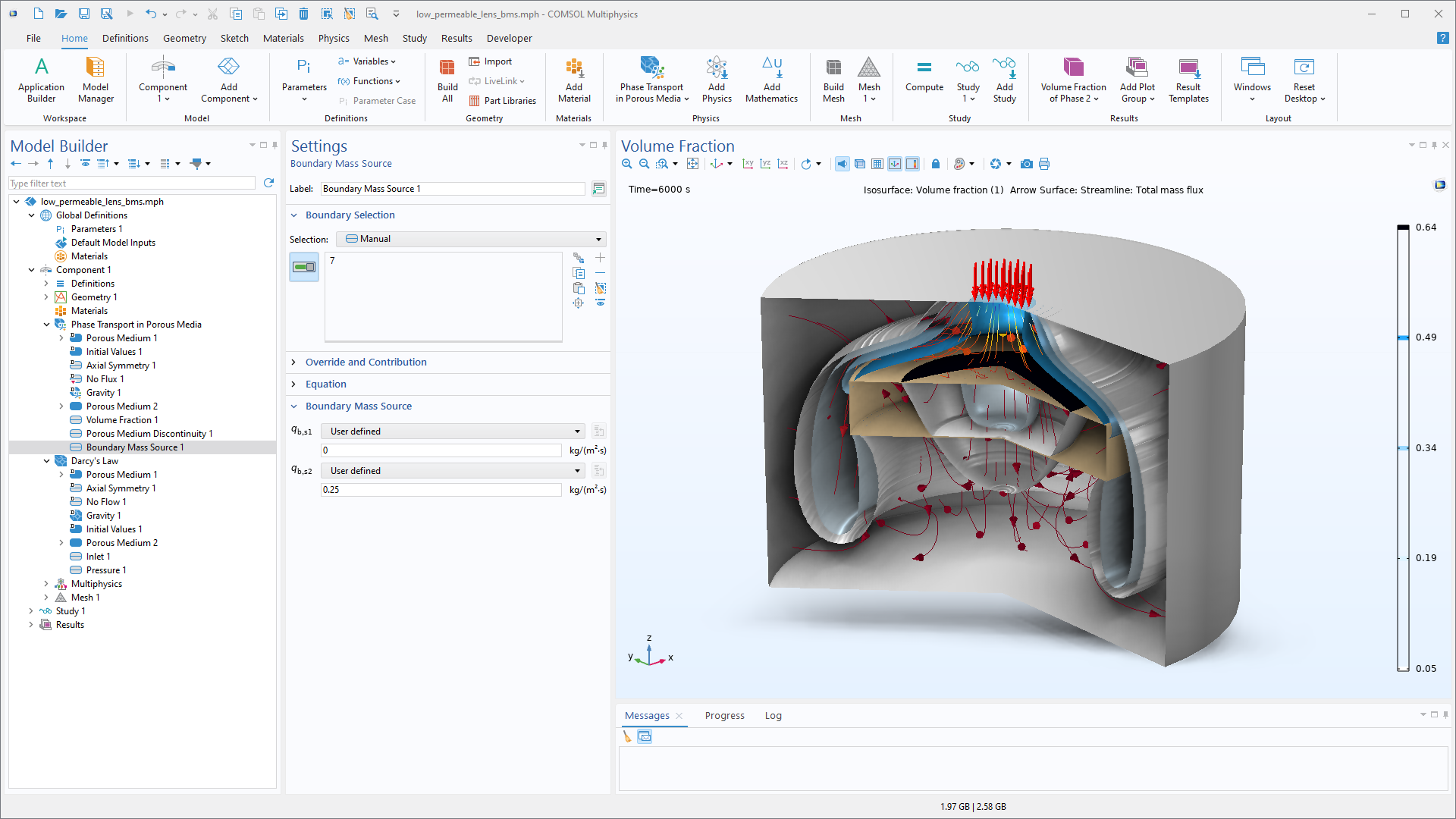
Opzione legge di potenza per le permeabilità relative
La funzione Porous Medium dell'interfaccia Phase Transport in Porous Media include ora una nuova opzione Power law, che facilita l'implementazione di permeabilità relative basate su espressioni power law. Questo miglioramento semplifica l'impostazione e la modellazione del comportamento della permeabilità nelle simulazioni di mezzi porosi.
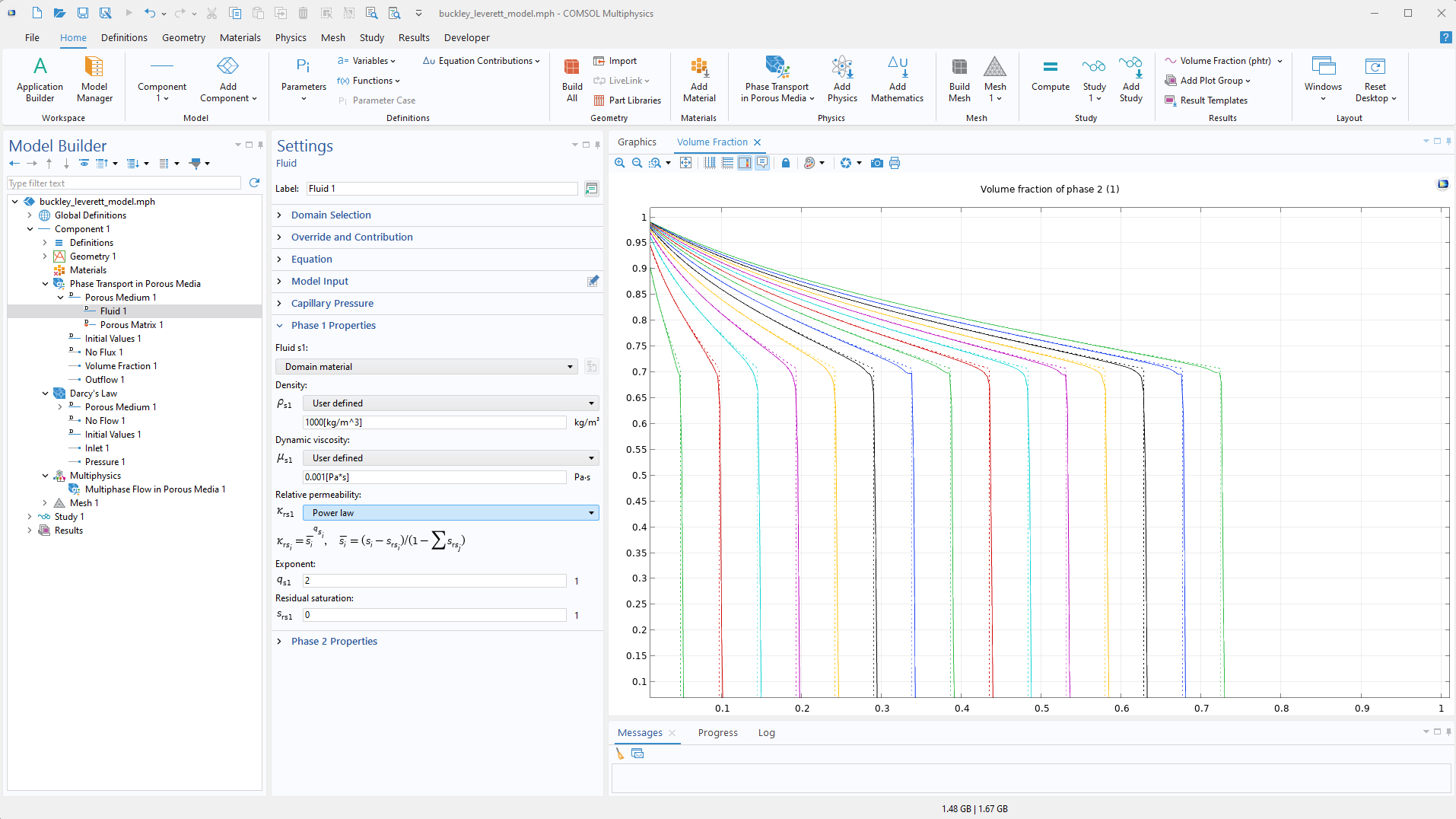
Nuovi nodi per fluidi e mezzi porosi nelle interfacce di trasporto di fase
Le interfacce Phase Transport includono ora due nuove funzioni: le funzioni Fluid e Porous Medium. La funzione Porous Medium include sottofunzioni per la definizione delle proprietà della fase e della matrice, sostituendo le precedenti funzioni Phase and Transport Properties e Phase and Porous Media Transport Properties. Questi aggiornamenti unificano la terminologia tra le diverse interfacce di fisica, migliorando l'esperienza dell'utente. Tutti i tutorial dell'Application Library che utilizzano una delle interfacce Phase Transport presentano queste nuove caratteristiche.
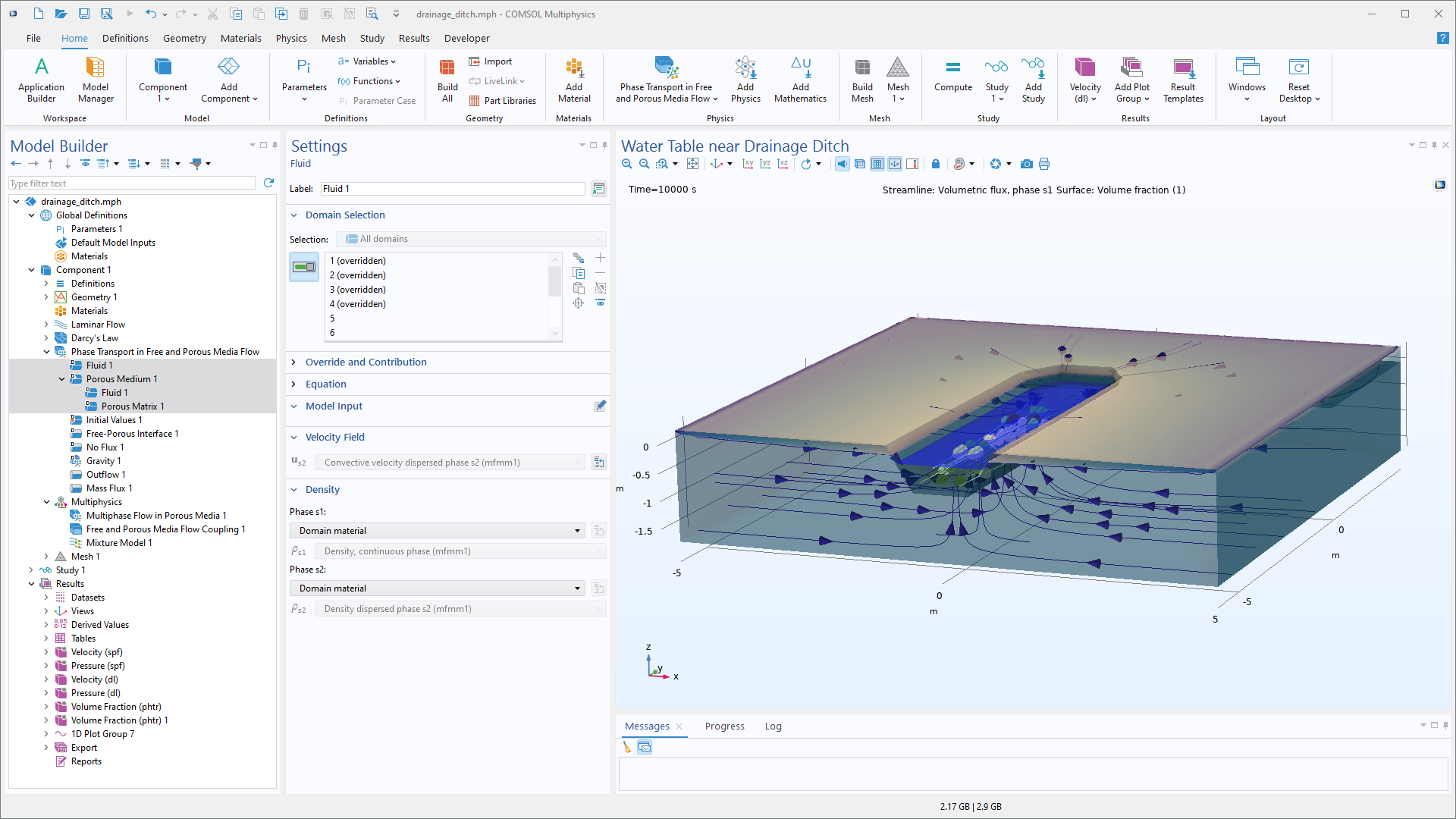
Modelli di risultato nelle interfacce di trasporto di specie chimiche
La creazione di grafici utili e visivamente accattivanti di sistemi in reazione può richiedere molto tempo, poiché spesso ci sono molti reagenti e quindi molti campi di concentrazione da graficare. Per risparmiare tempo, nelle interfacce di Chemical Species Transport sono disponibili diversi nuovi Result Templates. Tra questi, sono ora disponibili modelli di matrice di grafici che includono fino a quattro concentrazioni di specie contemporaneamente nella finestra Graphics. I Result Templates sono disponibili per tutte le interfacce Chemical Species Transport, indipendentemente dal prodotto aggiuntivo, ma sono particolarmente utili per le interfacce di trasporto multicomponente incluse nei moduli per l'ingegneria chimica e nel CFD Module, nel Porous Media Flow Module, nel Subsurface Flow Module e nel Microfluidics Module.
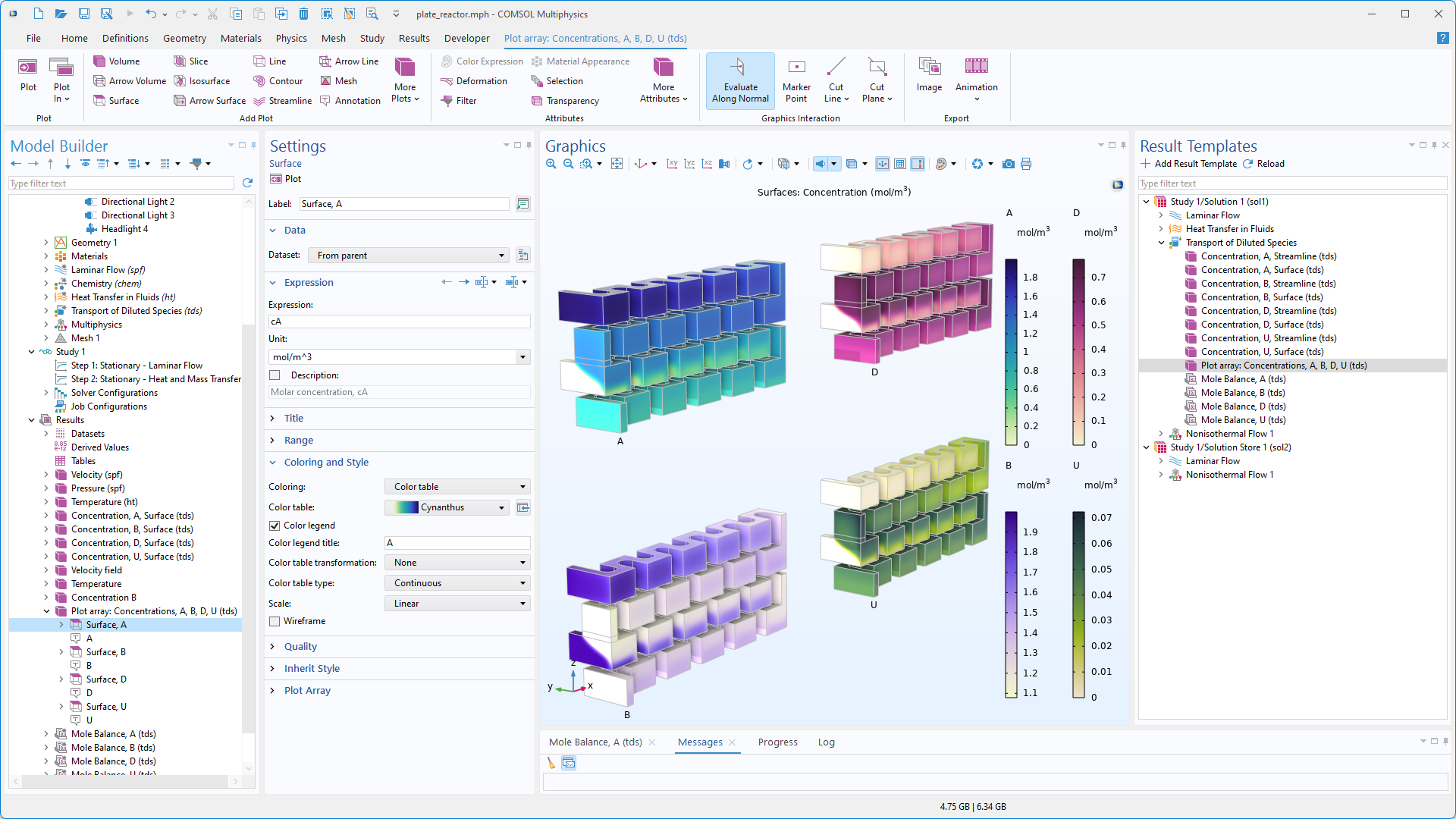
Nuova app di esempio
La versione 6.3 di COMSOL Multiphysics® introduce una nuova app di esempio nel Subsurface Flow Module.
Homogenized Porous Material Properties App
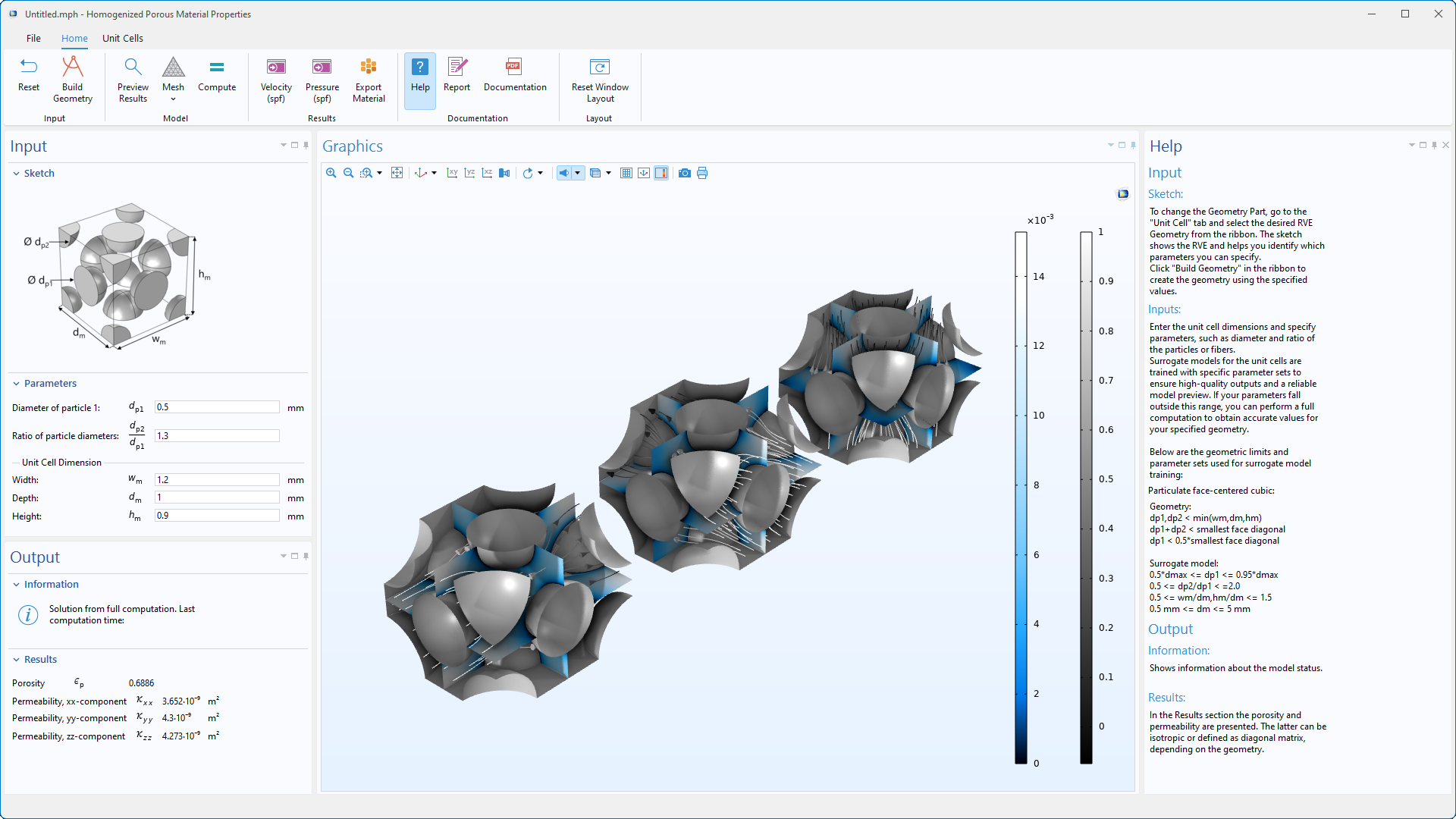
homogenized_porous_material_properties
Download da Application Gallery
